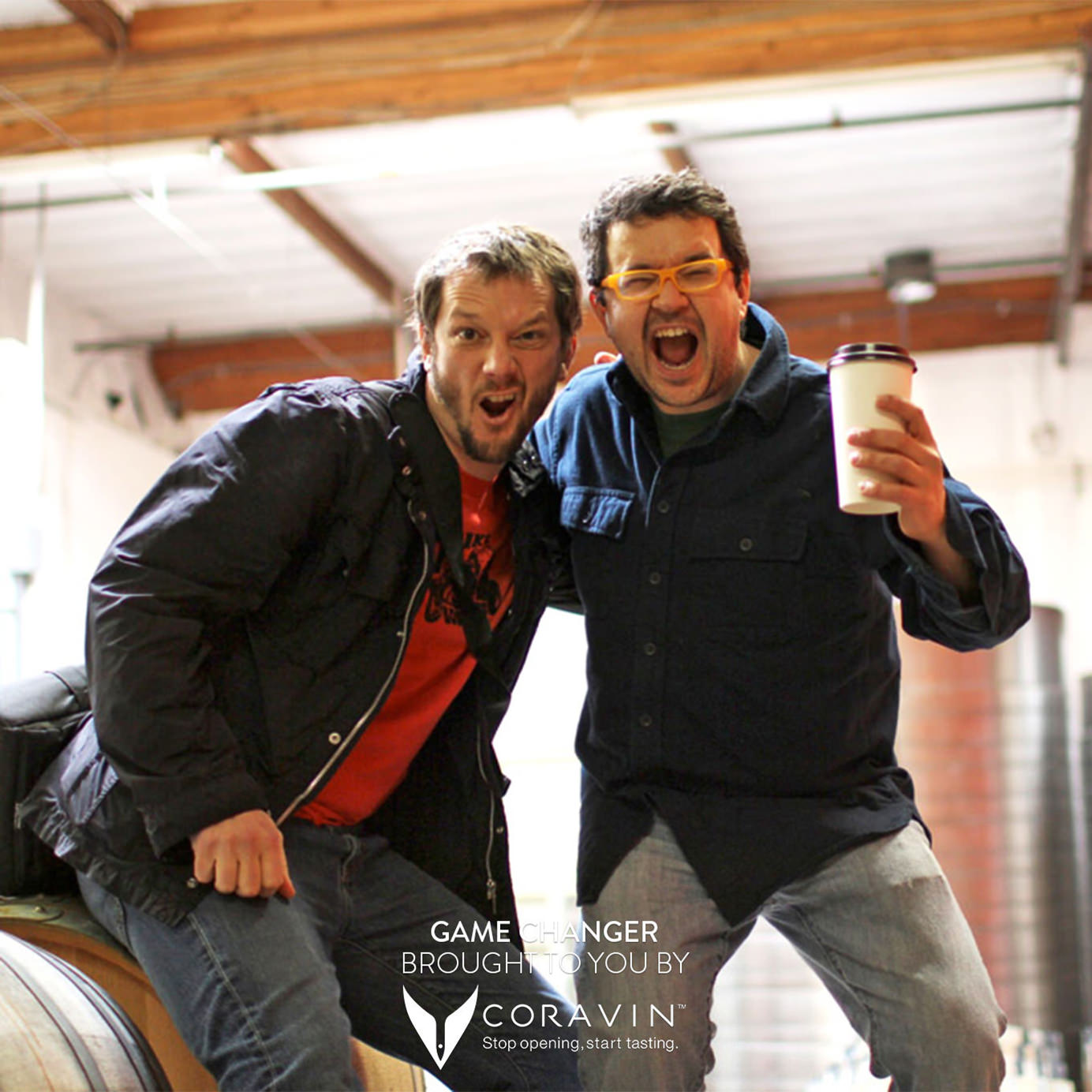This article and the Game Changer series is brought to you by Coravin, the first and only tool in the world to let you share, compare, and explore wines without pulling the cork.
Sometimes the greatest innovations and achievements can simply come from being so determined that your idea will become a reality that you refuse to listen to all of the reasons as to why it may never happen. It’s this determination – which some may prefer to call being fearless – that has catapulted Hardy Wallace and his wine brand Dirty & Rowdy to international acclaim, becoming one of the faces of the new California wine movement and causing many to label him a “Game Changer.”
At this point, Dirty & Rowdy has become a wine that is sought out by wine geeks across the globe, easily selling out the winery’s production every year. But the wine that’s produced isn’t another cult Napa Cabernet or an in-demand Pinot Noir. Instead the wines Hardy Wallace is making utilize grapes that are virtually unknown to most wine consumers – Mourvedre is used for the brand’s red and Semillon for their white – yet consumers are embracing them because they just taste so damn good. The brand’s success has partly led to the formation of other cult wineries in California, wineries run by young winemakers who aren’t afraid to try new things and expose drinkers to unknown grapes.
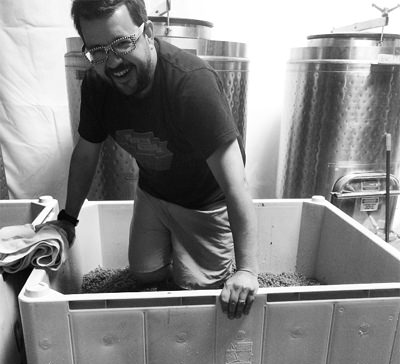 “Most people in California thought I was crazy when I said I wanted to whole cluster ferment Mourvedre or create a concrete fermented white wine made from Semillon, but I was thankfully too stupid to listen,” says Hardy. For the most part, the concerns of Hardy’s colleagues were warranted, Mourvedre and Semillon are not grapes that are very familiar to American consumers. Often that can present a serious challenge, as one needs to only be reminded of the most popular wines year in and year out – Cabernet, Merlot and Chardonnay, the kings and queen of California – to realize that going with something as esoteric as Mourvedre and Semillon presents a real risk of not selling anything at all, or the challenge of having to educate every single customer one at a time.
“Most people in California thought I was crazy when I said I wanted to whole cluster ferment Mourvedre or create a concrete fermented white wine made from Semillon, but I was thankfully too stupid to listen,” says Hardy. For the most part, the concerns of Hardy’s colleagues were warranted, Mourvedre and Semillon are not grapes that are very familiar to American consumers. Often that can present a serious challenge, as one needs to only be reminded of the most popular wines year in and year out – Cabernet, Merlot and Chardonnay, the kings and queen of California – to realize that going with something as esoteric as Mourvedre and Semillon presents a real risk of not selling anything at all, or the challenge of having to educate every single customer one at a time.
Because most people are probably unaware of these grapes, a quick education: Mourvedre is a red grape that comes from France, and is most widely used to make Bandol, the celebrated red wine of the Bandol region of Provence. Semillon comes from France as well, specifically the Bordeaux region, where it is blended with Sauvignon Blanc to make the region’s White Bordeaux. It is hardly ever made into a 100% Semillon wine, unless you’re at the very top of the price spectrum. If you live in a large city like New York, Chicago, San Francisco or LA, it is possible you may have seen these wines on a list or at one of the more trendy wine shops. But if not, it is much less likely you would be familiar with these grapes, even in great wine cities such as Denver, Cleveland, Nashville and Atlanta, the city Wallace called home before moving to California to pursue a career in wine.
I didn’t know any better so I decided to try and make the wine like a cru Beaujolais. I did things that nobody would do with Mourvedre. But you know what? When the wine was finished and bottled, it was delicious.
“I just started making great wine in the style we wanted to drink, and telling our story,” Hardy says. The wine didn’t explode because of scores and critics; instead consumers latched on to the story and the spirit of the makers.
It is an achievement few would expect if you were to encounter Wallace before this entire wine making journey began. Unlike many of the hot young winemakers of California, Wallace didn’t come from a winemaking family, or even have roots in the wine business, much less California, before beginning his winemaking career path. “At the beginning of my career, I was actually in technology sales,” says Hardy, “It was during a time in my life where I thought security and a hefty paycheck were the most important things, but I definitely wasn’t happy.”
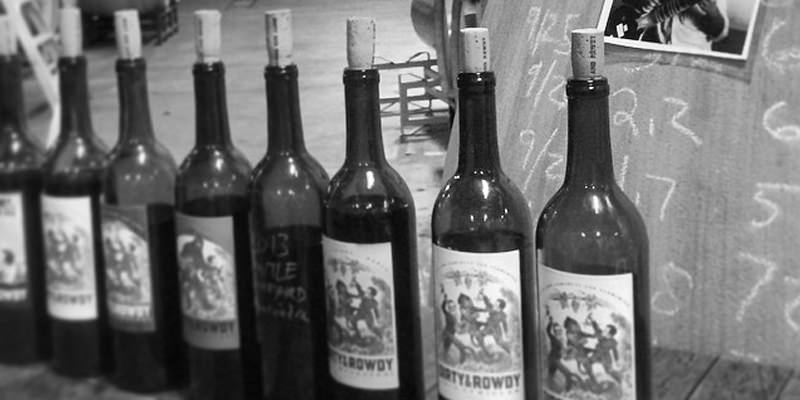
The one opportunity that working in technology sales did provide for Wallace was the chance to drink great wine. It’s actually where his passion began. “Being in sales in the early 2000’s, you got to go out to tons of dinners and luckily the company was picking up the bill. In the beginning of my career, I really followed the points system, because I wanted to be able to impress a client with a pricey Bordeaux or Napa Cab, and that was fun for a while, but then the economy took a downturn and expense budgets weren’t as large as they used to be.”
Even in the economic downturn, however, client dinners weren’t going to stop, but now it was imperative that Hardy be more frugal about the choices. “It’s easy to look at the list and order an expensive, well-reviewed Bordeaux; it’s much harder to identify a good Cru Beaujolais or a wine from the Rhône. Because I was forced to cut my budgets, these were the wines I started to get acquainted with and I fell in love with them. An added benefit was that when I ordered these wines, clients were less interested in drinking them – since they weren’t wines they knew – causing them to often switch to beer or cocktails and leaving the wine all for me.”
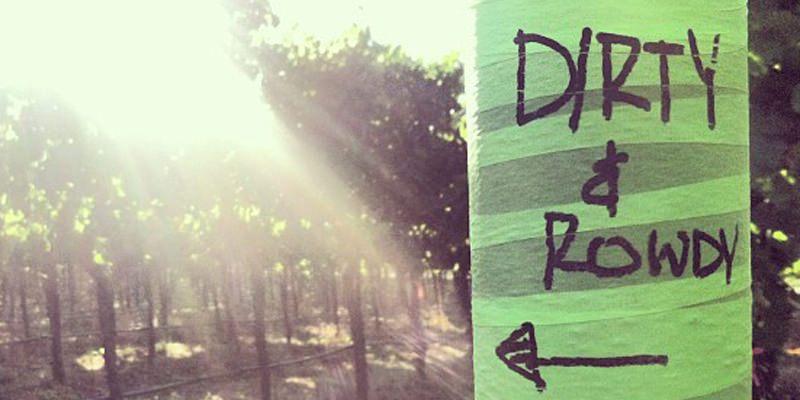
While Hardy was doing a good job of saving his company money at these dinners by choosing lesser known wines, he still was one of the more expensive employees on his sales team, and as the economy went south quickly, Wallace was one of the easiest positions to cut. “My being let-go was actually a blessing in disguise, because it allowed me to reevaluate my priorities. I had a realization: If you spend your life doing a job just for the money, the money will never be enough. I knew it was time to move on.”
Moving on initially meant simply starting a blog to chronicle his exploration of wine. “I was really inspired by Gary Vaynerchuk and I remember attending a conference right at the height of Wine Library TV where he was the keynote speaker. During his talk he said in all likelihood there was someone in the audience that would hustle as hard as he was hustling and be in the same position as him the following year. I figured there was no reason that person couldn’t be me and I just went for it.”
As Hardy was getting more involved with his blog, he became acquainted with the person who would ultimately become his partner in Dirty & Rowdy, Matt Richardson. “Matt was running a food blog in Atlanta at the same time I was running a wine blog. We would often interact online, but one day he suggested we meet in person. Initially I was a bit nervous about meeting someone I had met online, but we agreed to bring our significant others along to the meeting to ease any concerns. We met at the bar at Restaurant Eugene and just all hit it off, talking for hours. That began an awesome friendship. Matt and I would get together weekly, he’d cook and I’d bring wine.”
At this point, Hardy had been unemployed for well over six months, and it was time to start figuring out what to do next. “Murphy Goode Winery, which is owned by Jackson Family, announced a contest called ‘A Really Goode Job.’ The gig, if you were selected, was running social media for them for six months and it included a salary and accommodations. No one in the wine world had really mastered social media or talking directly to customers, so I made it my goal to become great at it.“ To land the gig, everyone that applied had to make an entry video, proclaiming why they would be the best for the role. “Matt had a bit of experience in video and he said to me, if you let me shoot your application video, it won’t be the slickest, but I promise it will be the one people want to watch.” In the video Hardy just had fun, he was lighthearted and accessible, coming off as someone who was an anti-snob. It landed him the gig.
“After spending six months with Murphy Good, I realized I wanted to stay out in Napa, but to do so, I was going to have to be ok with making almost no money. It was a huge risk, but I decided I had to go for it. Winemaker Kevin Kelly offered me a job as a grunt, and I happily accepted. I sold my apartment in Atlanta and moved into a house with four roommates.”
The longer Hardy spent in Napa, the more he realized he wanted to start making his own wine. But making wine in Napa is extremely difficult. Grapes are incredibly expensive and space to make wine is at a premium. “I couldn’t afford to make the wine on my own,” says Hardy, “so I went to Matt and said, what if we go in on just two barrels of wine – which means having to only purchase a ton of grapes – I can’t promise the outcome, but I think trying could be worth it.”
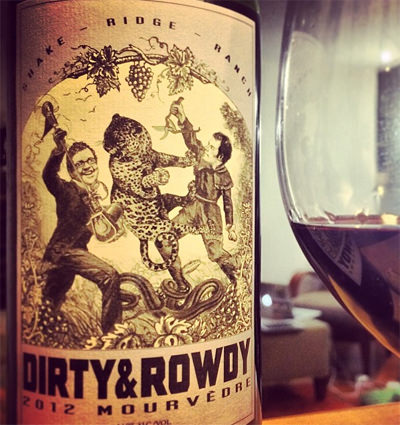 The duo pulled their money together, and when they did, they knew the grapes they wanted to purchase weren’t going to be the stars of the Napa Valley “I originally thought I wanted to make a Muscat – another lesser known grape – but the growing season that first year was really terrible for Muscat grapes, and there wasn’t much available. Then I thought, well maybe I could do a cool innovative version of White Zinfandel, but that wasn’t available either. Then I heard there was exactly one ton of Mourvedre available at this one well known winery, so even though I wasn’t that familiar with the grape, besides a few Bandols I had consumed, I pounced.”
The duo pulled their money together, and when they did, they knew the grapes they wanted to purchase weren’t going to be the stars of the Napa Valley “I originally thought I wanted to make a Muscat – another lesser known grape – but the growing season that first year was really terrible for Muscat grapes, and there wasn’t much available. Then I thought, well maybe I could do a cool innovative version of White Zinfandel, but that wasn’t available either. Then I heard there was exactly one ton of Mourvedre available at this one well known winery, so even though I wasn’t that familiar with the grape, besides a few Bandols I had consumed, I pounced.”
Hardy Wallace made the wine in the exact way everyone told him not to. “I didn’t know any better so I decided to try and make the wine like a cru Beaujolais. I did things that nobody would do with Mourvedre, but you know what, when the wine was finished and bottled, it was delicious.” It was a completely different wine from your typical California reds, it was proof Napa Cabs and Merlots weren’t the only wines that could dominate the conversation.
Thanks to Hardy’s success, and that of others around him, the term “New California Wine” has come to mean wine that defies expectations and doesn’t fit the mold. More winemakers are flocking to California to make wine, and they’re doing so with obscure grapes. “We know if we were making Pinot Noir we’d be able to sell if for two times as much, and Napa Cab for at least three times, but we fell in love with making Mourvedre and have embraced the grape,” says Hardy.
After the success of the red, it was time to make a white. Here again, Hardy didn’t listen to anyone, and the results paid off. “Before I even purchased the white wine grapes, I had decided I wanted to ferment a white in one of those concrete eggs, so I convinced Matt we should buy one. We shelled out $7,000 dollars for the thing, which made us committed to using it, regardless of the white wine grapes we wound up with.”
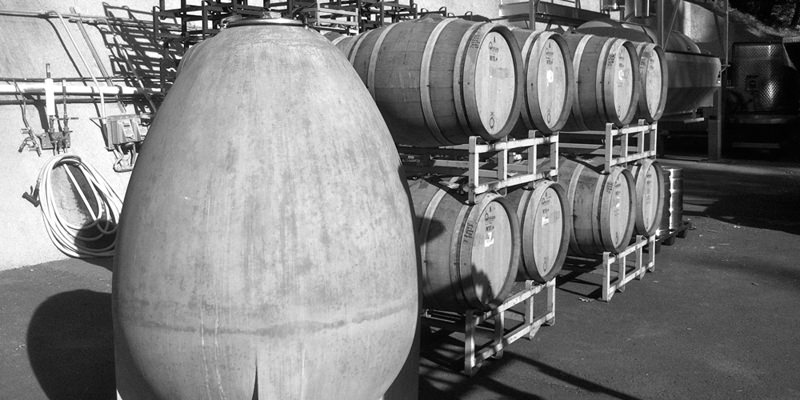
The wine Hardy wound up with was Semillon, and just like the Mourvedre, he decided to go his own way. “I had this crazy idea of taking half of the grapes and fermenting them with their skins to create an orange wine and then taking the other half, pressing the juice and throwing the juice in the concrete egg to ferment. Then after both were complete, blending them together. It was a nuts idea.” Nothing like this wine had ever come out of Napa before, and it started to create buzz. Very quickly, all 300 cases of the Semillon sold out.
As the Dirty & Rowdy brand has continued to grow, Hardy produces more wine each year, yet he is still unable to fill demand – right now they make 2,500 cases and could easily sell at least 5,000.
In order to succeed and continue to grow, Hardy, Matt and their wives Kate Graham and Amy Richardson have continued to break the mold in terms of the traditional way wine is made and promoted. They have an incredible digital presence for such a tiny brand, especially on Instagram, and are very engaged with their consumers, something that is revolutionary for most wine brands that still only converse with a customer if they happen to come into the tasting room. “Last week I actually had a back and forth with a group of people on Instagram who had posted themselves drinking our wine in Singapore. Literally as they were drinking the wine, we were able to have a conversation, it was incredible.” This innovative and hands-on approach to customer engagement has allowed Dirty & Rowdy to build a very successful direct to consumer business, selling most of their wine that way. It’s a situation wineries would kill for, as most of the profits stay with the winery.
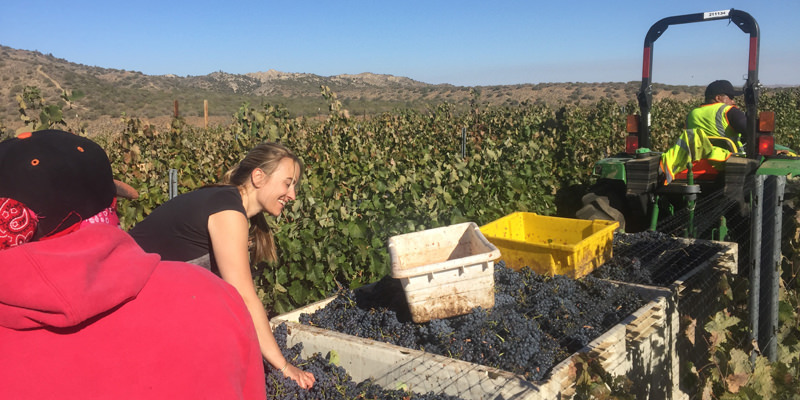
The biggest secret to their success and probably their biggest innovation of all, Hardy says, is staying true to their love of wine. “Many other people out here get involved for their love of business, and to chase profits. They love the business more than they do the wine. We’re the exact opposite and that outlook has worked very well for us.”
This article and the Game Changer series is brought to you by Coravin, the first and only tool in the world to let you share, compare, and explore wines without pulling the cork.
